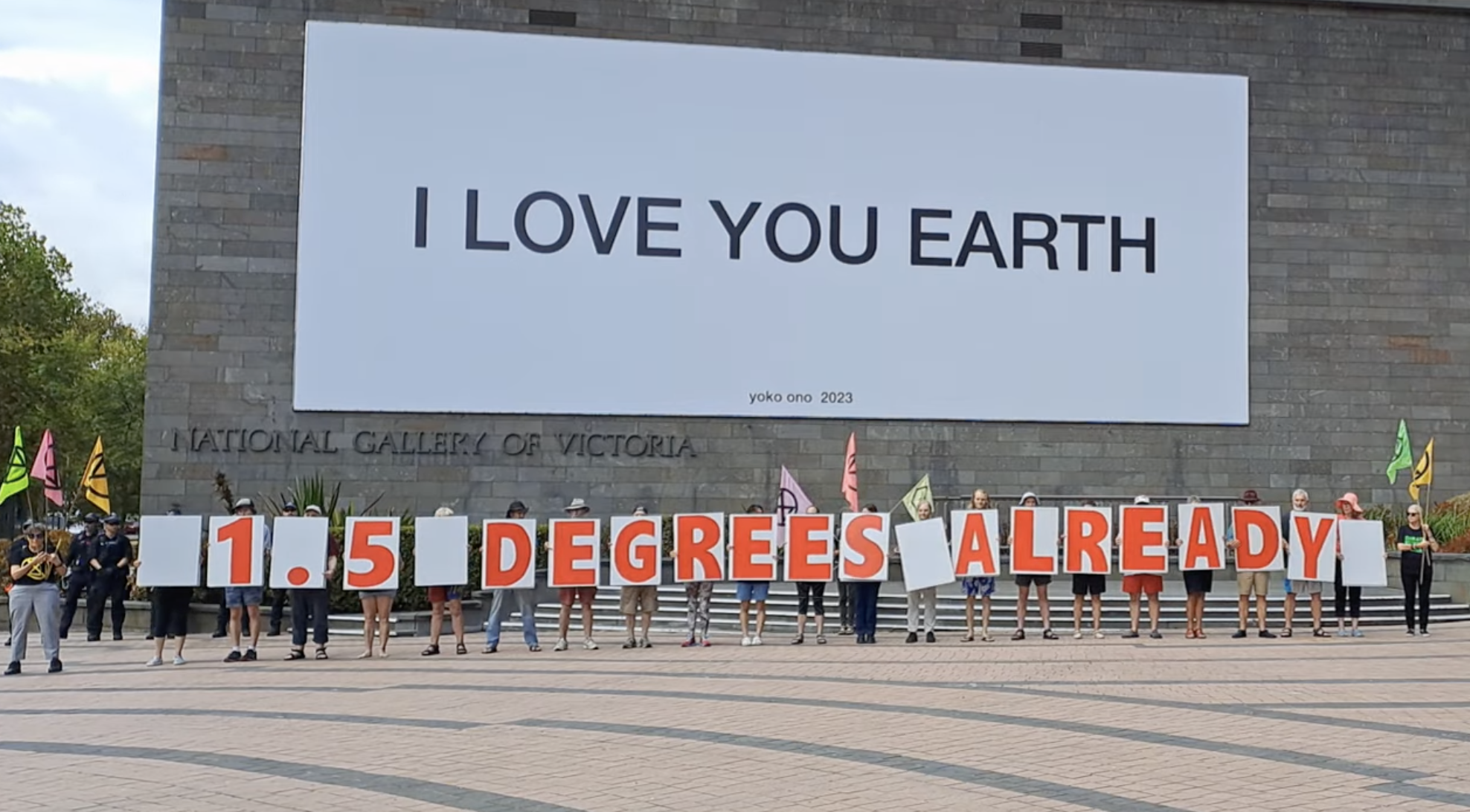Environment: Booming oil and gas profits mainly benefit shareholders
March 23, 2024
The oil market is twice as large as all ten largest metal markets combined. Most oil and gas profits go to shareholders, not reinvestment in the industry. Since 2001 only 5 months have been cooler than the average for 1981-2010. Extinction Rebellion perform at the National Gallery of Victoria.
Drilling into oil and gas (2)
The net income (US$ in chart below) of the oil and gas industry has more than doubled in just three years

while over the last seven years, the industry has been directing proportionally less and less to capital expenditure and more to shareholders and paying off debt. I suppose one might argue that spending less on capital development is an indication that the industry moguls can see the writing on the wall, except that the actual dollar amount committed to capital development hasnt fallen.
The big winners have been the shareholders who have received a rapidly increasing share of a rapidly increasing profit, which no doubt goes some way to explaining the massive increases in the wealth of many of the worlds richest billionaires.

In 2023, just seven of the biggest oil and gas companies made nearly US$150 billion dollars of profit, in no small measure due to the war in Ukraine. They distributed 90% of that to their lucky shareholders.

Thanks to Tracy Carty for these figures.
Notwithstanding companies high profits, their shares have underperformed in the longer term. This may be evidence that investors are worried about a long-term decline in the industry caused by competition from renewables and governments slowly but surely orienting their policies to zero emissions. Or maybe not. There are still many companies and investors who are confident that there are good profits to be made for a while yet. Sadly, they are probably correct.
Ban oil and gas advertising, say Canadian doctors

The Canadian Association of Physicians for the Environment has been advocating for a ban on the advertising of oil and gas in Canada since 2022 and has not been shy of using hard-hitting adverts. The Canadian doctors argue that fossil fuels represent a more serious risk to the health of Canadians than tobacco, a devastating health risk factor for which doctors in many countries argued long and loudly, eventually successfully, for advertising bans.
Legislation for a Fossil Fuel Advertising Ban has now been tabled in the Canadian parliament by a private member. Ill put my money on the bill failing but many pieces of ultimately successful legislation that threaten powerful interests have been rejected at the first time of asking. Keep pushing, Docs.
How big is the oil market?
Theres a tendency to think of oil as the fuel of the 20th century. However, despite its role in the cause and outcome of World War II, oil production globally (measured in the graph below in terawatt-hours) only really took off around the middle of the century. Indeed, it was a crucial driver and indicator of The Great Acceleration.
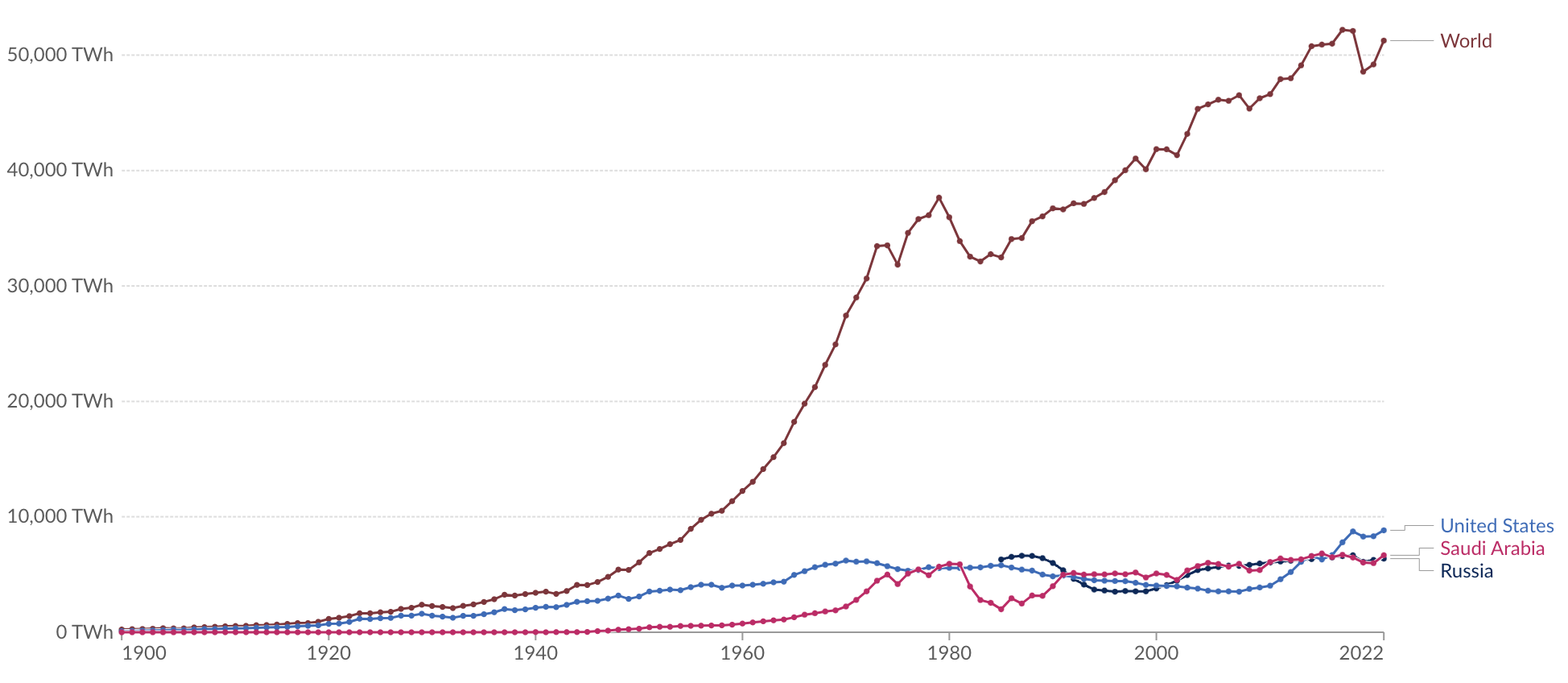
The USA, Saudi Arabia and Russia are the main oil producers, responsible for around 40% of total global production. As a result of fracking, the USA has been the single biggest producer since 2018 and is likely to retain its dominance for the foreseeable future. Four other countries in the Middle East, plus Canada, China and Brazil are collectively responsible for about a quarter of global production.
The current oil market is enormous. Only by comparing it to other large resource markets can its size be fully appreciated. For instance, it is more than twice as large in dollar value as the top ten metal markets combined. Australia is undoubtedly the worlds major producer of iron ore but the income it produces pales somewhat compared with, say, the USAs income from oil.
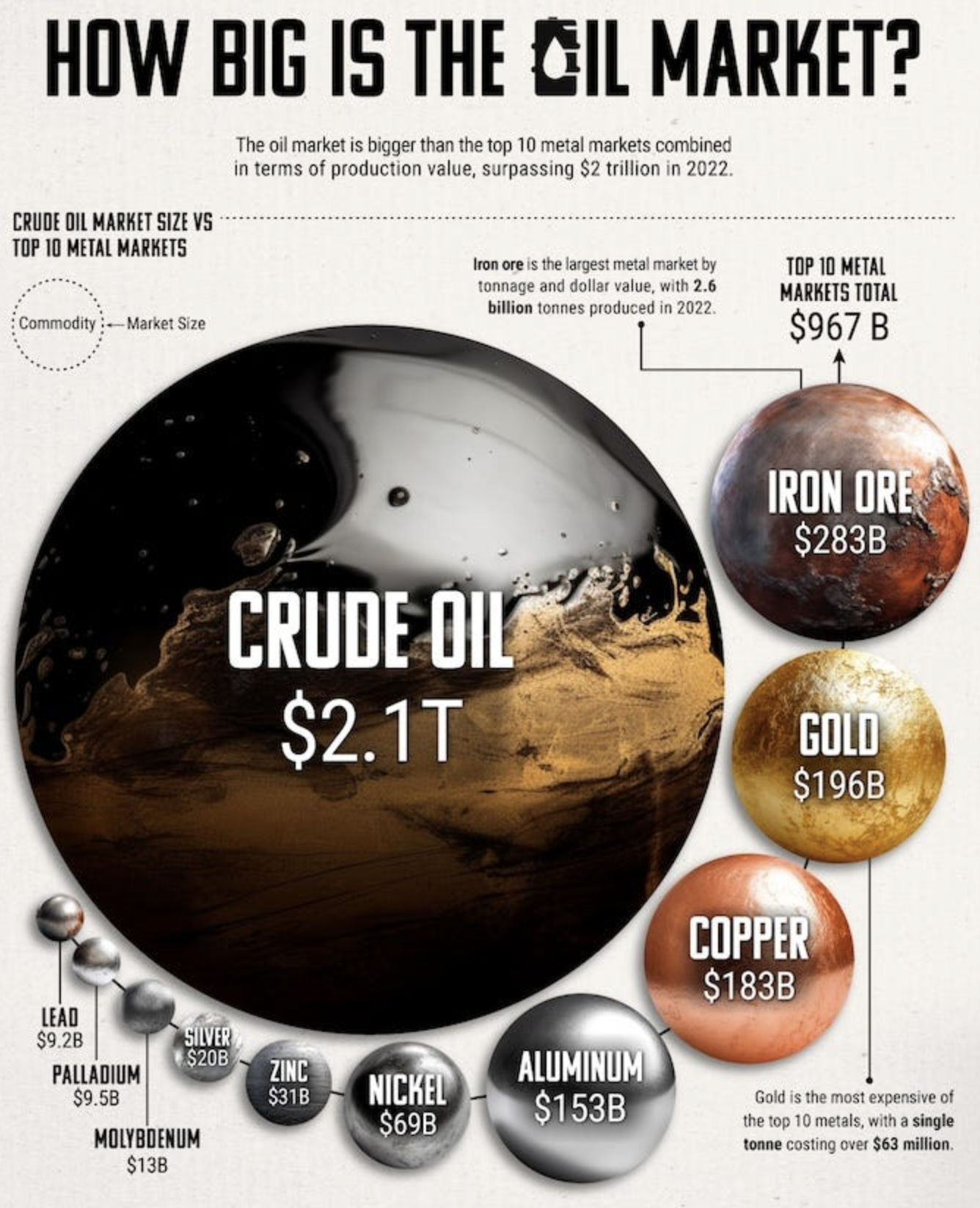
As an aside, gold is the second largest metal market dollar-wise but the weight produced is tiny - the annual production amounts to only 3,100 tonnes. If all the gold that has ever been produced were melted down and poured into Olympic-sized swimming pools, it would fill just four.
By comparison, 2.6 billion tonnes of iron ore are produced annually. Thats almost a million times as much by weight for a market value that is less than 50% larger.
Gold is a pretty useless metal thats hard to find, hard to mine and hard to refine. It has caused enormous personal suffering, violence, war and environmental destruction. Why is it worth so much? Human beings are odd, irrational creatures.
Movers and shakers
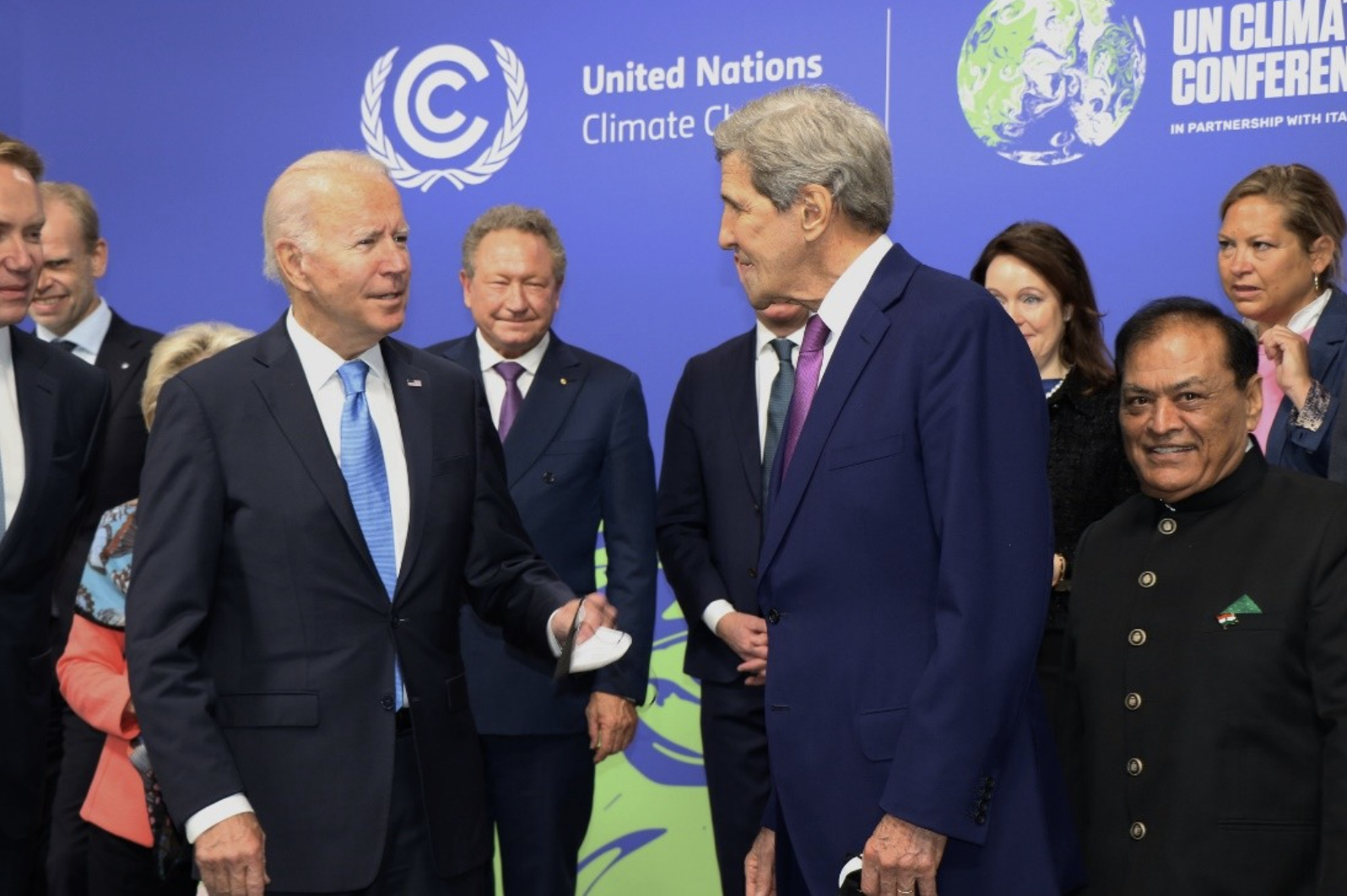
Talking of iron ore, does anyone know who the two chaps framing Twiggy are?
Temperature anomalies 1979-2024
Its hardly news that the world is getting hotter but its still worth keeping a close eye on exactly what is happening. The graph below displays very clearly the trend for global surface temperatures over the last 45 years.
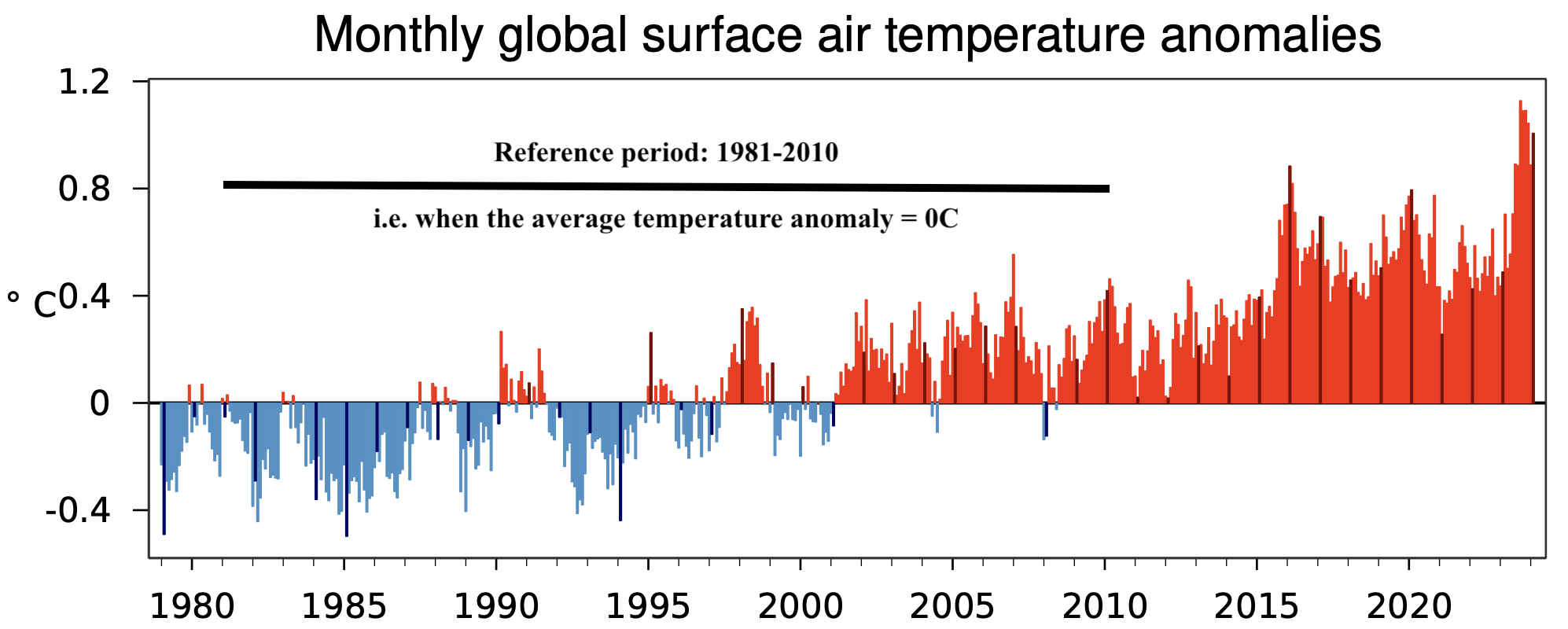
For any newcomers, a temperature anomaly is the difference between the average temperature at any time (a particular day, week, month or year, say) and the average temperature over a specified longer period. The longer (average) period in the graph is 1981-2010 and is shown by the 0oC horizontal line. The vertical lines represent how much the average temperature for each month between January 1979 and February 2024 deviated from the 1981-2010 average. The darker vertical lines indicate the values for February each year. And to avoid any confusion, Ill emphasise that the baseline (i.e., the period for calculation of the average) in this graph is very recent; it is not the often-used, cooler 1850-1900 or the even earlier pre-industrial period.
Two features stand out in the graph:
- Since the end of the baseline period (2010), not a single month has been below the baseline. In fact, since February 2001, only 5 of the ensuing 278 months have been below the baseline.
- There is a clear trend of decreasing cold anomalies from around 1985 to 2001 and increasing warm anomalies since then i.e., warming didnt start around 2000, it started long before that.
- Plus, not obvious but you can take my word for it, since June 2023 every month has been the warmest ever recorded for that month of the year.
If anyone is in any doubt about why this might be so, the next graph shows the monthly average concentrations of CO2 in the atmosphere since 1958 at the Mauna Loa Observatory in Hawaii. This is the longest record of direct measurement of CO2 in the atmosphere.
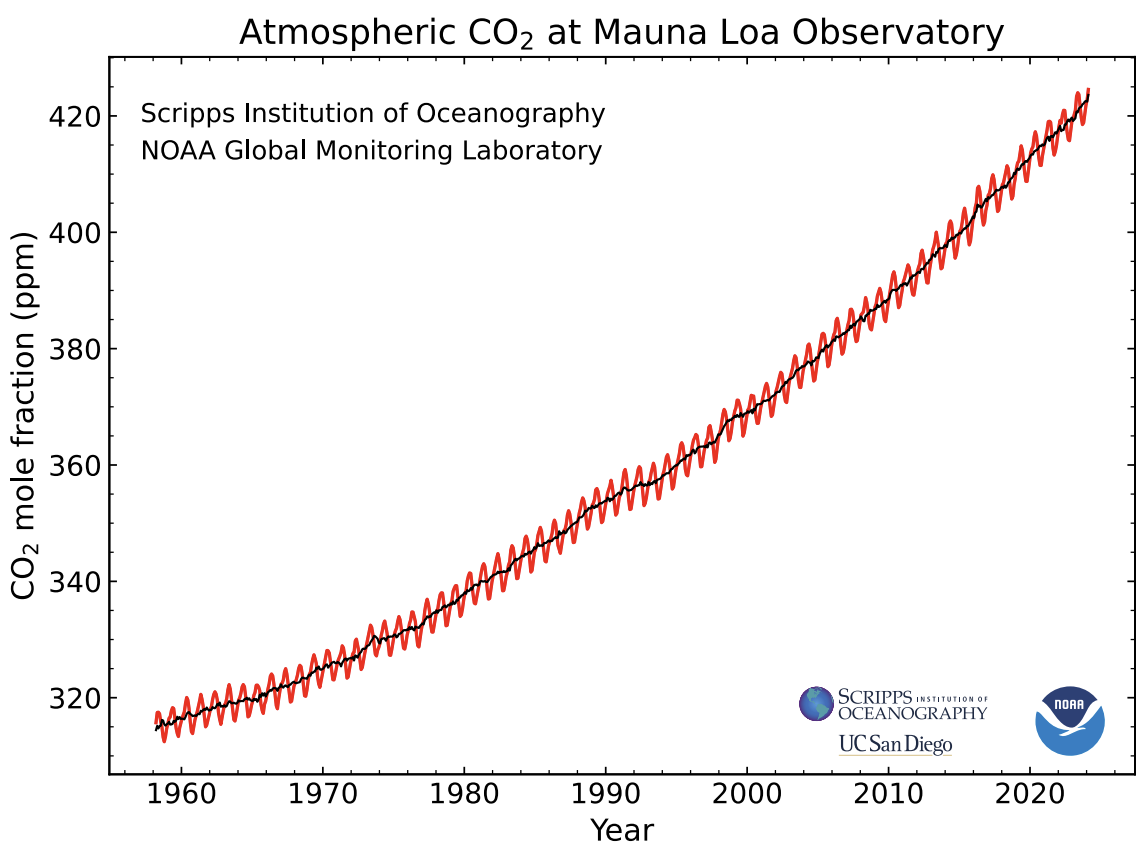
Between February 2023 and February 2024, the monthly average CO2 increased from 420.30ppm to 424.55pm. An increase of just over 1% in a year.
The final graph provides an 800,000-year view on atmospheric concentrations of CO2. The current level is way outside anything modern humans have previously experienced. The link leads to an animated presentation of concentrations over this period.
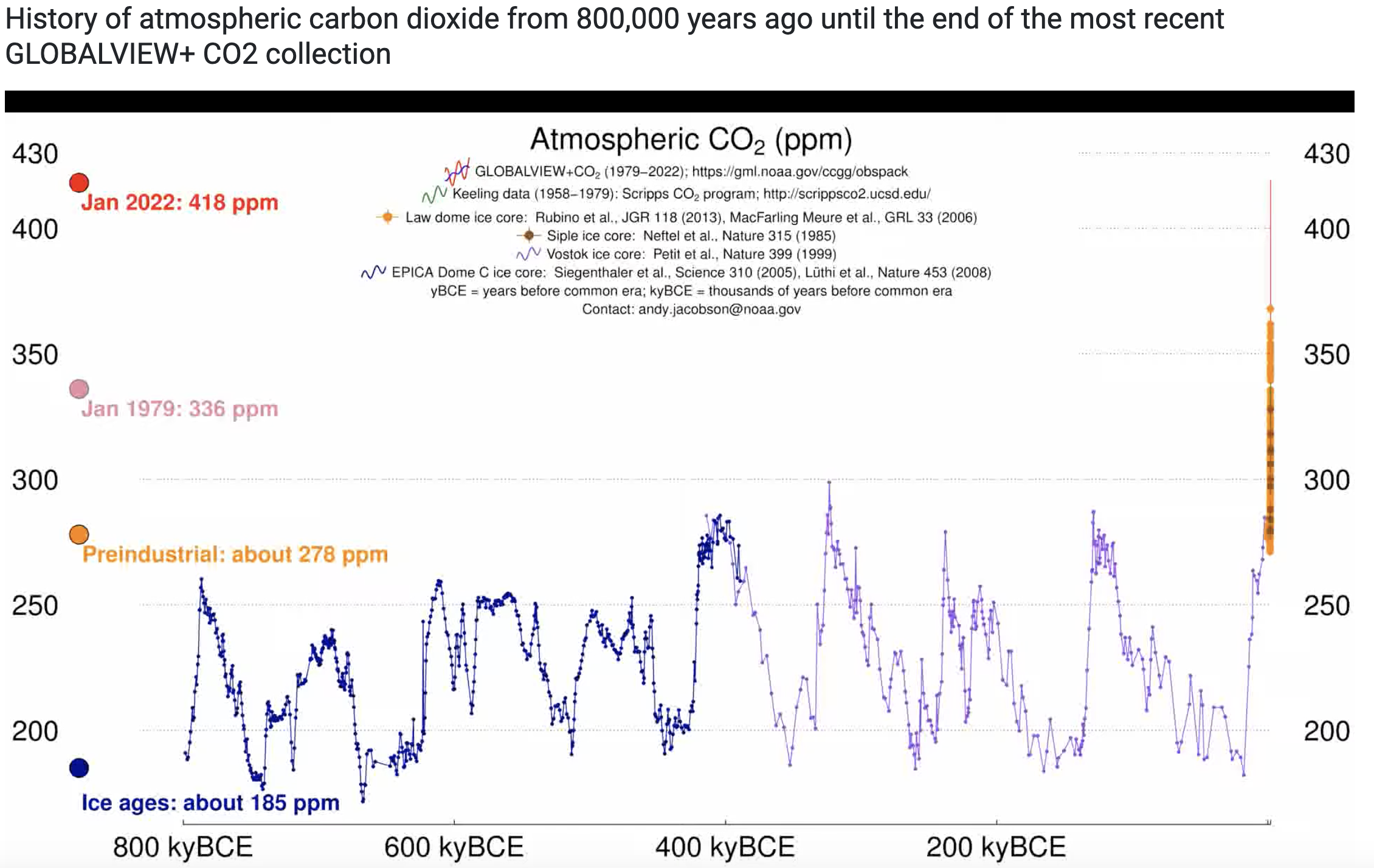
Clean energy roll out reduces CO2 emissions
The roll out of clean energy technologies to generate and use electricity continued to accelerate in 2023:

Between 2019 and 2023, global energy-related emissions of CO2 increased by 900 million tonnes (Mt) to reach 37.4 billion tonnes (Gt). However, according to the International Energy Agency, without clean energy from solar (900 Mt), wind (700 Mt) and nuclear (100 Mt) the increase in CO2 emissions would have been three times larger (the IEA considers nuclear to be clean).
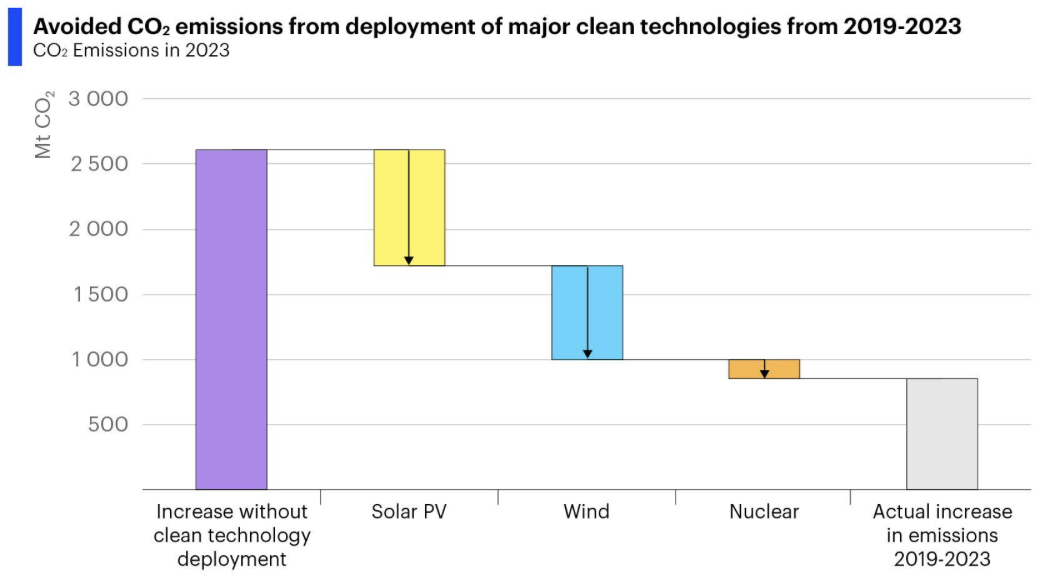
Rhino poaching
A few weeks ago, I mentioned the myths used to justify legal big-game hunting and included a photo of a couple of Hemingway wannabees beaming over a dead hippo. Of course, the problem is not only legalised slaughter, theres also poaching.
In the last ten years, 7,600 rhinos have been poached in South Africa alone. Things were improving rapidly from 2014 to 2020 but have been deteriorating again since then. In 2023, two-thirds of those killings occurred in just one state-run nature reserve that is only one-twentieth the size of the well-known Kruger National Park. The poachers take just the rhino horn for its alleged but non-existent healing powers.
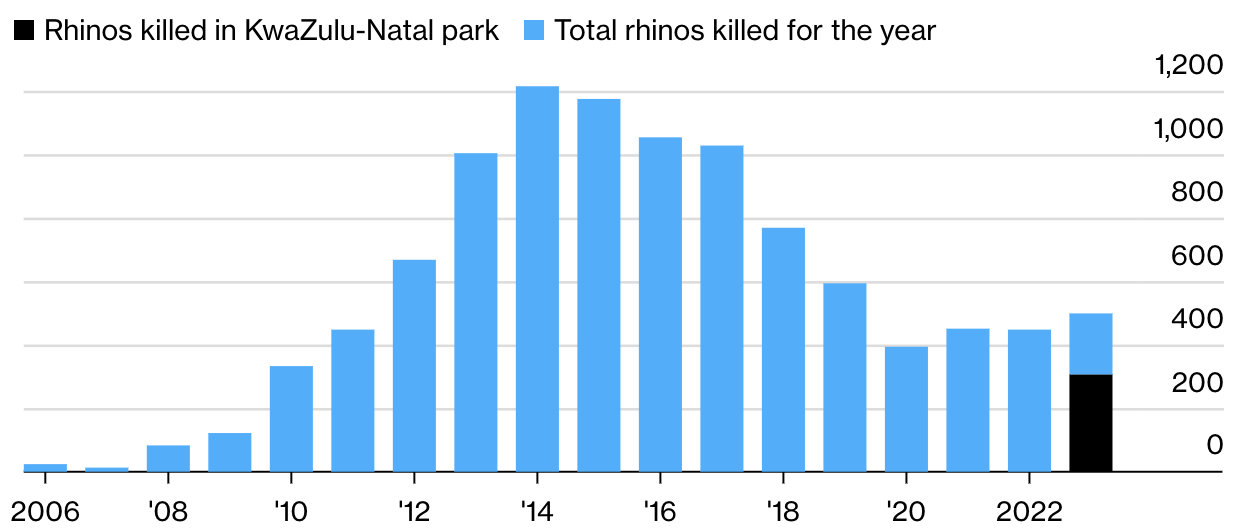
Installation art by Extinction Rebellion
The Melbourne branch of Extinction Rebellion staged a totally peaceful and non-disruptive but amusing and pointed demonstration a couple of weeks ago. Well done, all.
